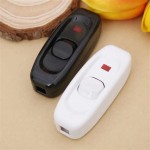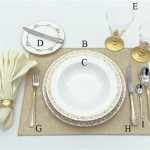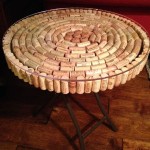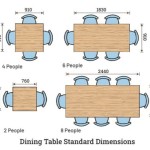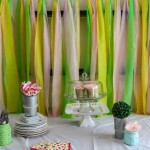How to Make a Shuffleboard Table Slick
A slick shuffleboard table is critical for optimal gameplay. The smoothness and speed of the playing surface directly impact the accuracy and excitement of each match. Achieving and maintaining that desired slickness requires understanding the factors involved and employing effective techniques. This article explores methods for making a shuffleboard table slick, covering everything from cleaning and waxing to using shuffleboard powder and addressing environmental considerations.
Understanding Shuffleboard Table Friction
Friction is the primary obstacle to achieving a slick shuffleboard surface. Several factors contribute to friction, including the table's material composition, the presence of dirt and debris, and the humidity levels in the surrounding environment. Most shuffleboard tables are constructed from hardwood, typically maple, which offers a durable and reasonably smooth surface. However, even the smoothest wood possesses microscopic irregularities that create friction. Over time, dust, oils from hands, and other particulate matter accumulate on the table, exacerbating the problem. High humidity can also cause the wood to swell slightly, increasing the surface area and, consequently, the friction. Addressing these factors is essential for achieving the desired level of slickness.
Furthermore, the pucks themselves play a role in friction. The materials used in puck construction, their weight, and their condition directly impact their movement across the table. Worn or damaged pucks will increase friction and hinder play. Therefore, maintaining both the table surface and the pucks is crucial for optimal performance.
The ultimate goal is to minimize the coefficient of friction between the puck and the table surface. This is achieved through a combination of cleaning, polishing, and the strategic application of shuffleboard powder, also known as shuffleboard sand or wax.
Cleaning and Preparing the Shuffleboard Table
The first step in making a shuffleboard table slick is thorough cleaning. This process removes accumulated dirt, dust, and oils that impede the movement of the pucks. Neglecting this step will prevent any further treatments from being fully effective.
Begin by using a soft, lint-free cloth or microfiber cloth to wipe down the entire surface of the table. Avoid using abrasive materials or harsh chemicals, as these can damage the finish of the table. Dry-wiping will remove loose particles but may not fully eliminate embedded grime.
For a deeper clean, consider using a specialized shuffleboard table cleaner. These cleaners are formulated to remove dirt and oils without harming the wood finish. Follow the manufacturer's instructions carefully. Typically, the cleaner is applied sparingly to the cloth and then wiped across the table in the direction of the wood grain.
Alternatively, a mild solution of soap and water can be used. However, it is crucial to use a very small amount of soap and to ensure that the table is thoroughly dried afterward. Excess moisture can damage the wood and lead to warping or swelling.
After cleaning, allow the table to dry completely before proceeding to the next step. This may take several hours, depending on the humidity levels in the room. A dry table is essential for proper wax application.
Inspecting the table surface for any scratches or imperfections is also crucial at this stage. Minor scratches can often be buffed out with a soft cloth, while deeper scratches may require professional repair. Addressing these imperfections will improve the overall smoothness of the table.
Applying Shuffleboard Wax (Powder)
Shuffleboard wax, despite its name, is typically a powder made from finely ground polymer beads. This powder acts as a lubricant, reducing friction between the pucks and the table surface. The correct application of shuffleboard wax is essential for achieving the desired level of slickness.
There are various types of shuffleboard wax available, ranging in speed and consistency. Lighter waxes are faster and are generally preferred for competitive play, while heavier waxes offer more control and are suitable for recreational use. Experimenting with different types of wax may be necessary to find the ideal balance for your playing style and table.
The application process involves sprinkling a thin, even layer of wax across the entire surface of the table. Avoid applying too much wax, as this can create a sticky or gummy surface. A small amount of wax goes a long way.
A common technique is to hold the wax container a few inches above the table and gently shake it from side to side. This distributes the wax evenly across the surface. Another method involves using a shaker specifically designed for dispensing shuffleboard wax.
After applying the wax, use a shuffleboard sweep or a soft, lint-free cloth to distribute it evenly. The goal is to create a thin, consistent layer of wax across the entire playing surface. Avoid creating clumps or uneven patches of wax.
Allow the wax to settle for a few minutes before playing. This allows the beads to settle into the microscopic crevices on the table surface, further reducing friction. Regular reapplication of wax is necessary to maintain the slickness of the table.
It's important to note that different players have different preferences regarding the amount of wax used. Some prefer a very slick table, while others prefer a slightly slower surface for better control. Experimentation is key to finding the right balance.
Maintaining the Shuffleboard Table's Slickness
Once the shuffleboard table has been cleaned and waxed, regular maintenance is essential to preserve its slickness and prolong its lifespan. This includes routine cleaning, occasional waxing, and addressing environmental factors.
After each game or playing session, wipe down the table with a soft, lint-free cloth to remove dust and debris. This prevents the accumulation of particles that can increase friction. Regular cleaning is more effective than infrequent deep cleaning.
Reapply shuffleboard wax as needed to maintain the desired level of slickness. The frequency of reapplication depends on the amount of use the table receives and the environmental conditions. A good rule of thumb is to reapply wax whenever the pucks start to slow down noticeably.
Control the humidity levels in the room where the shuffleboard table is located. High humidity can cause the wood to swell, increasing friction. Consider using a dehumidifier to maintain a stable humidity level, ideally between 40% and 60%.
Protect the table from direct sunlight. Prolonged exposure to sunlight can cause the wood to fade and dry out, leading to cracking and warping. Use curtains or blinds to shield the table from direct sunlight.
Avoid placing heavy objects on the shuffleboard table. This can cause the wood to warp or become uneven. Store the pucks and other accessories in a separate location.
Periodically inspect the table for scratches or imperfections. Address minor scratches promptly to prevent them from becoming larger. Deeper scratches may require professional repair.
Using the appropriate cleaning products and waxes is crucial for maintaining the table's finish. Avoid using abrasive cleaners or harsh chemicals, as these can damage the wood and reduce its slickness.
By following these maintenance tips, you can ensure that your shuffleboard table remains slick and enjoyable for years to come.

How To Wax A Shuffleboard Table

Diy Shuffleboard Table Step By Guide

How To Wax A Shuffleboard Table

Diy Shuffleboard Table Step By Guide

How To Wax A Shuffleboard Table

Super Slick Silicone Spray For Shuffleboard Tables

How To Wax A Shuffleboard Table

How To Pick The Right Powder For Your Shuffleboard Table Pool Portfolio

How To Build A Shuffleboard Table Free Plans

How To Make A Shuffleboard Table With S Wikihow

